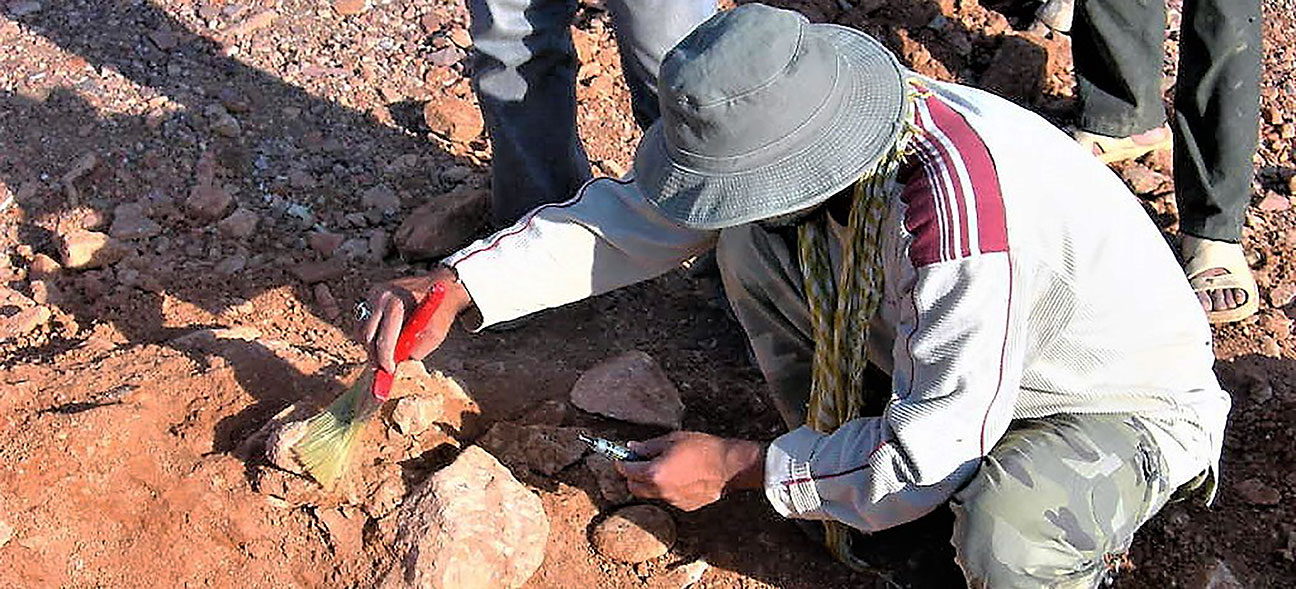Archaeology
Realising the need for building up a documentation of the rich archaeological and tribal heritage of India in a scientific and systematic manner considering the needed perspective, INHCRF has been undertaking archaeological and anthropological activities since 2005. The institution has since then, systematically documented hundreds of rock art sites of Rajasthan, Gujarat, Madhya Pradesh, Maharashtra, and Goa. As a result of exploring vast tracts of the Chambal Basin, the institute has documented hundreds of sites from prehistoric to the historic period along with the systematic collection of archaeological artefacts from these sites. Apart from many other successive activities, INHCRF has also documented ancient temple sites and Memorial stones (hero and sati stones) in Bundi and Bhilwara districts of Rajasthan.
Collaborations:
At the core of the INHCRF ideology is the desire to further exploration in the Indian subcontinent through symbiotic and mutual cooperation amongst scholars and universities alike. In this regard, we have collaborated with numerous institutions and foundations.
In the Vidarbha region of Maharashtra, INHCRF and Tata Institute of Fundamental Research have under a collaborative project scientifically documented various megalithic sites, particularly the Junapani site with a view to discern the archaeo-astronomical practices of the Iron Age period.
In addition to this, the institute has collaborated with various foreign agencies and has conducted interdisciplinary archaeological studies on various historical sites. INHCRF and British Museum, London collaborated for an ERC funded project ‘Beyond Boundaries: Religion, Region, Language and the State' a major multidisciplinary research project which aimed to revise the history of Asia in one of its most significant periods. The project focused on the period of the Guptas (circa 320 to 550). Together, the teams of INHCRF and the British Museum carried out an extensive methodical archeological survey in Vidarbha, Maharashtra in a scientific manner to understand the archeological heritage of the region. This led to the discovery and documentation of hundreds of archeological sites, structures, sculptural elements, and numismatic findings. This project has significantly enhanced our archeological understanding of the region.
In another project, INHCRF and the University of Warsaw collaborated in a joint Indo-Polish project to explore Nalasopara, a port of great antiquity. The Polish team was led by Dr. Emilia Smagur with Andrzej Romanowski as the second member. INHCRF was represented by Dr. Riza Abbas (Project Director) and Sitaram Toraskar. The project aimed to establish the archaeological potential of the site along with a detailed map of the landscape. The intention was to understand the long term development of Sopara from its earliest period. During exploration, artifacts from selected areas were meticulously collected for further classification and study. Despite being the first instance of Indo-Polish exploration, the preliminary results proved encouraging, thus paving the way for further detailed exploration of this region in the future.
INHCRF has also independently undertaken projects relating to tribal ethnographic studies on the Thakur tribe of Nashik, documentation of the Bohada dance festival of Thane district, and Mask Making in Jawahar taluka, district Thane.
In Rajasthan, the institute took up the documentation of wall and floor art in the districts of Bundi, Kota, Bhilwara, and Jhalawar as well as ethnographical studies on the Bewaria Tribe of Kotputli area.
Academic Guidance:
Along with these activities, the Foundation continuously supports and guides students, research scholars, and academicians by providing them with research material, field training, work experience, and academic help in research activities.






